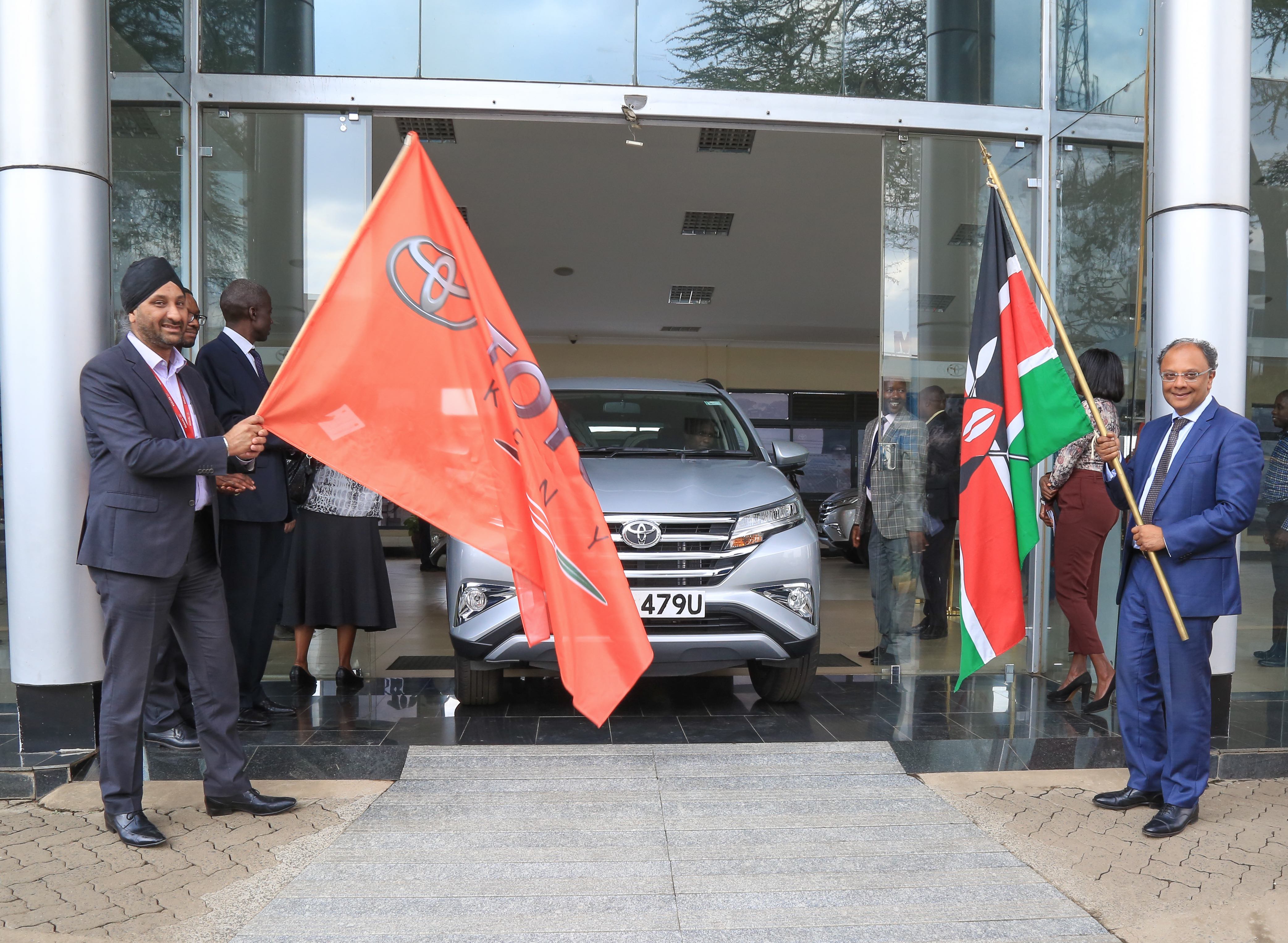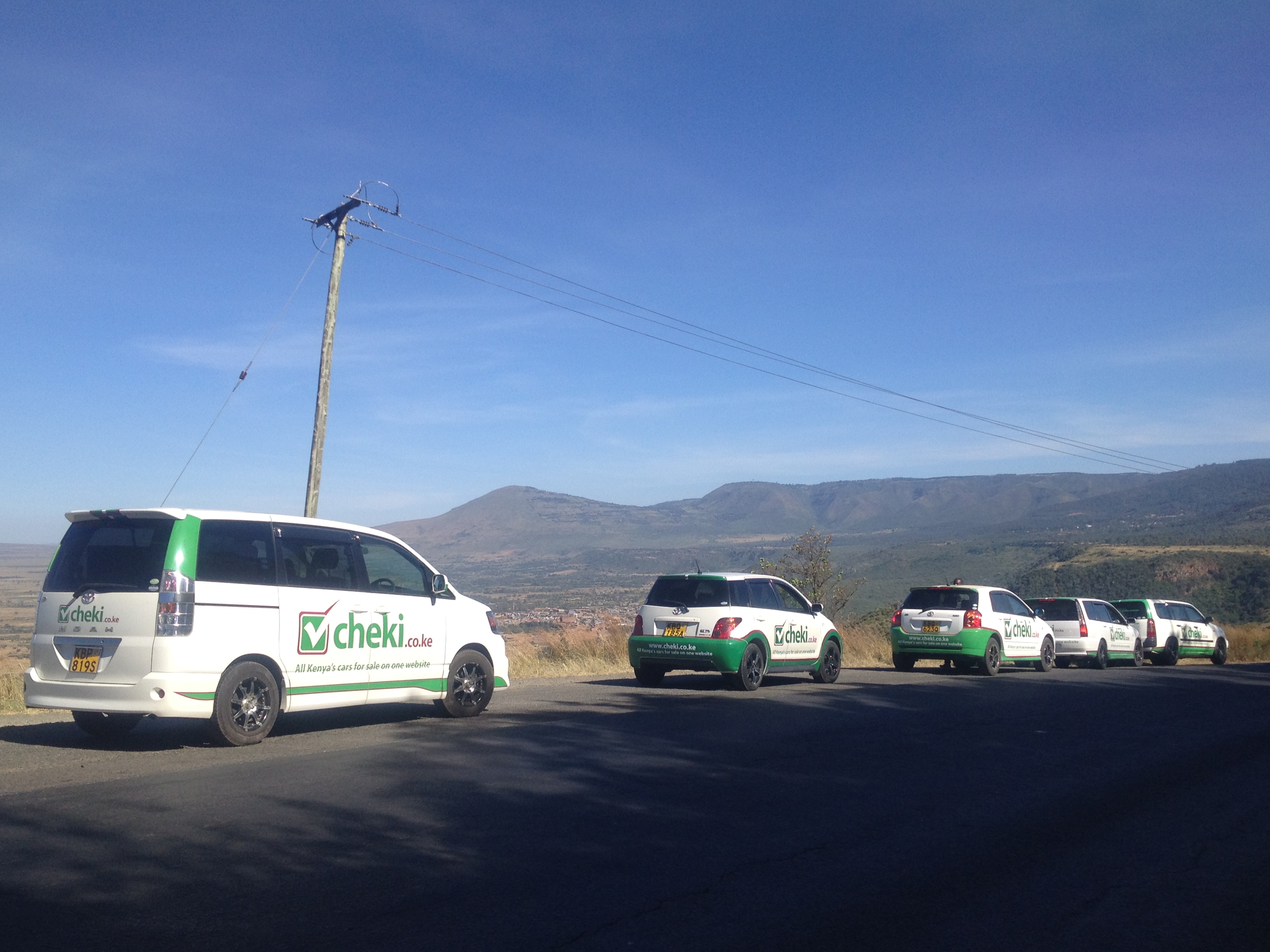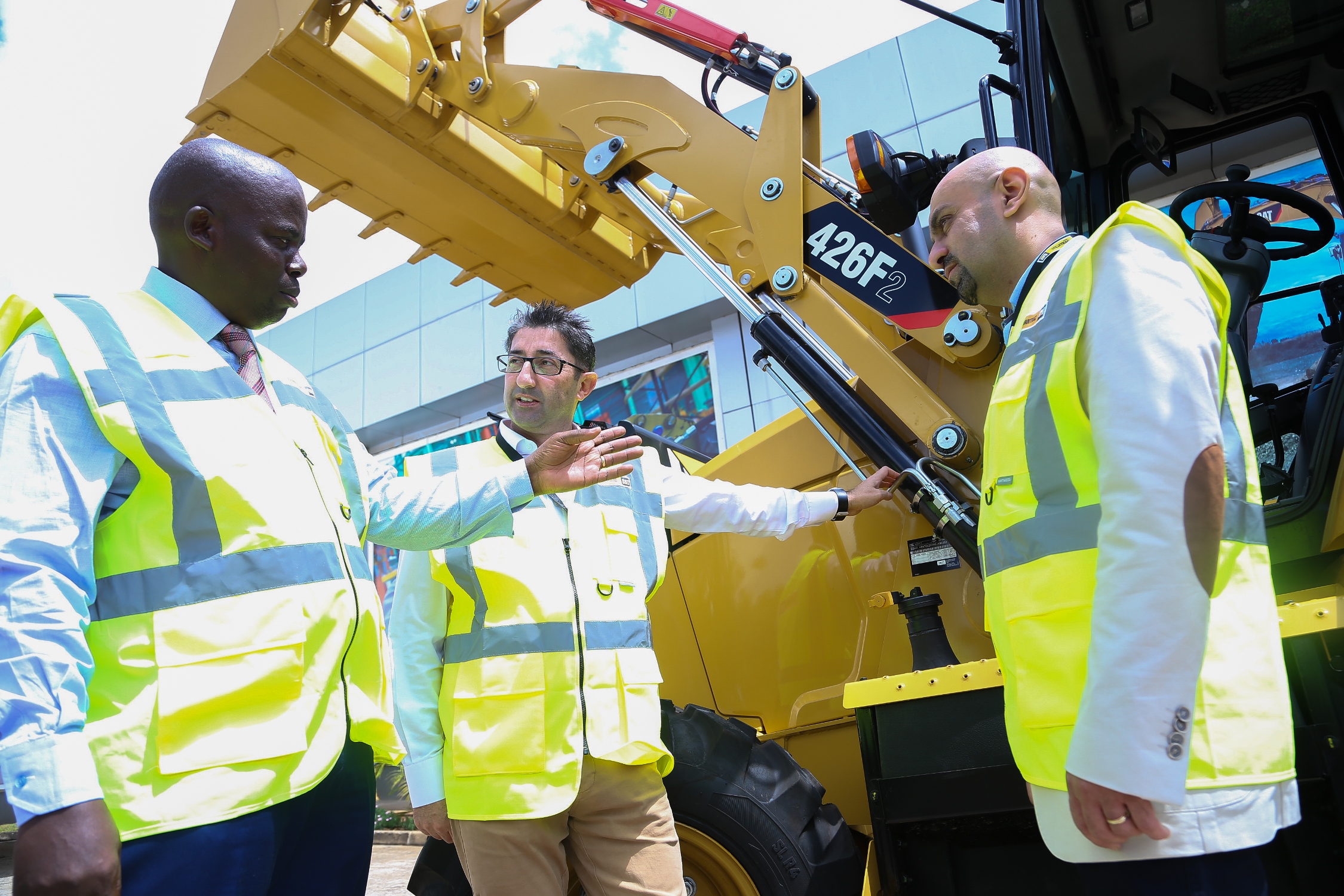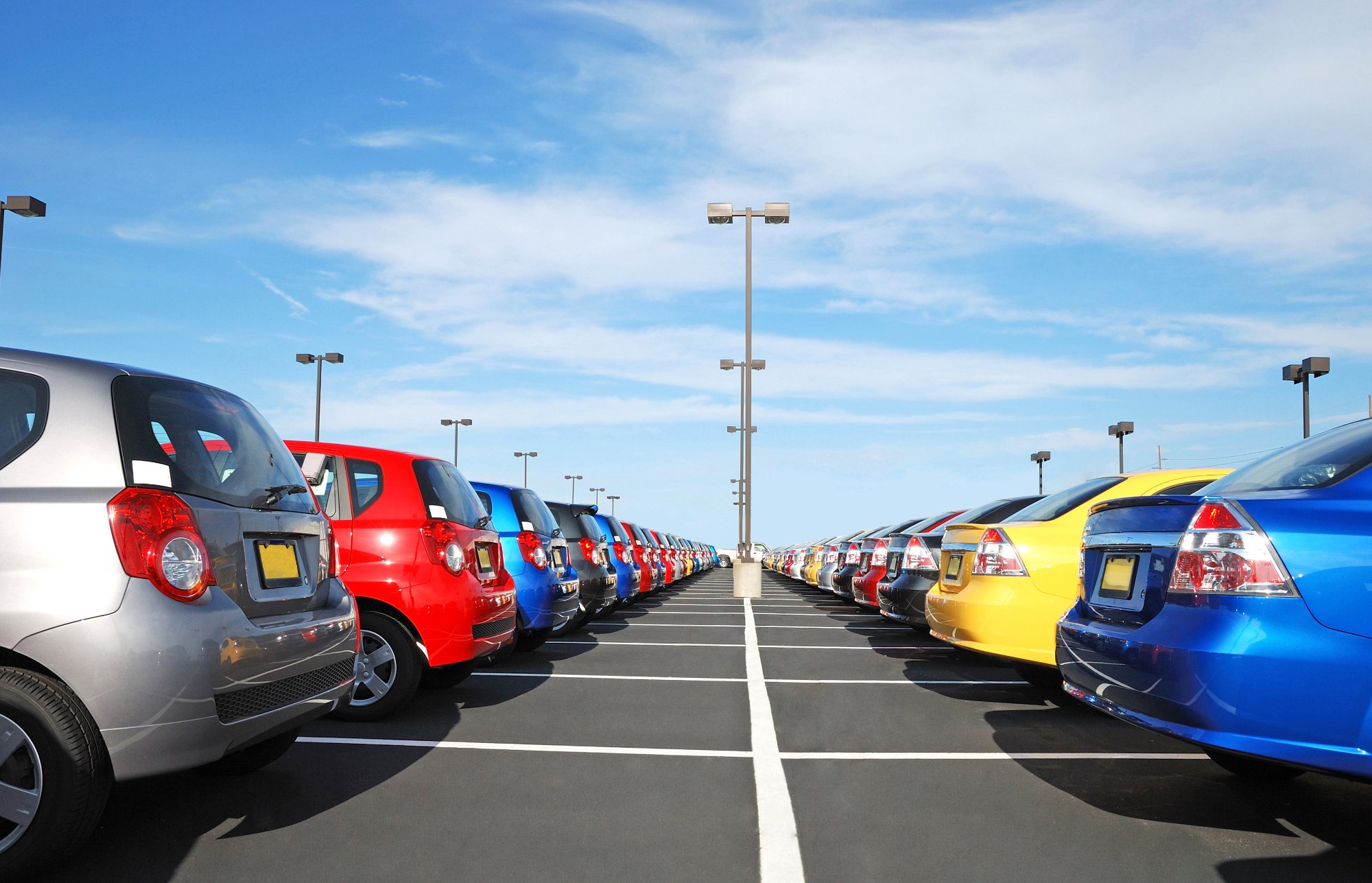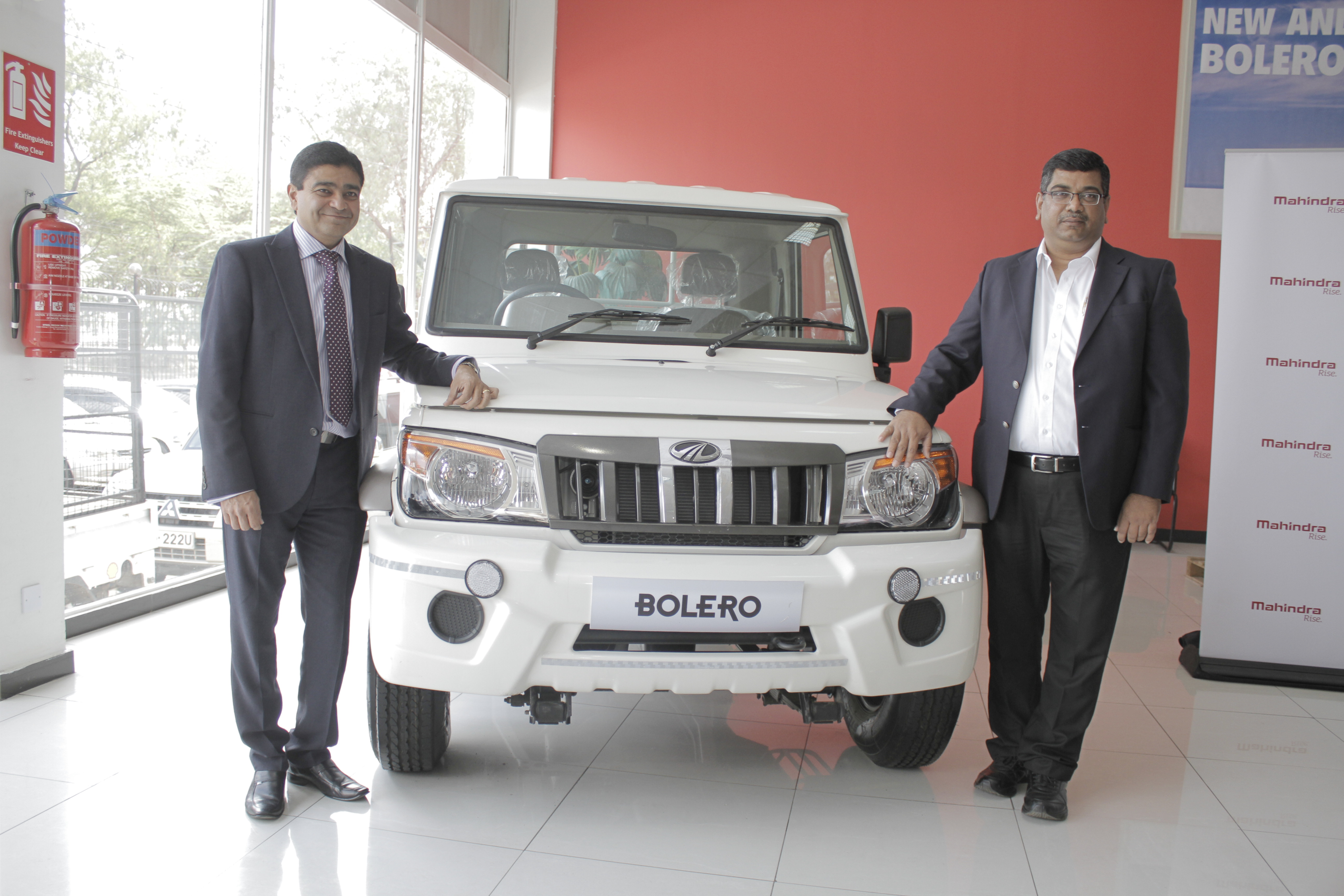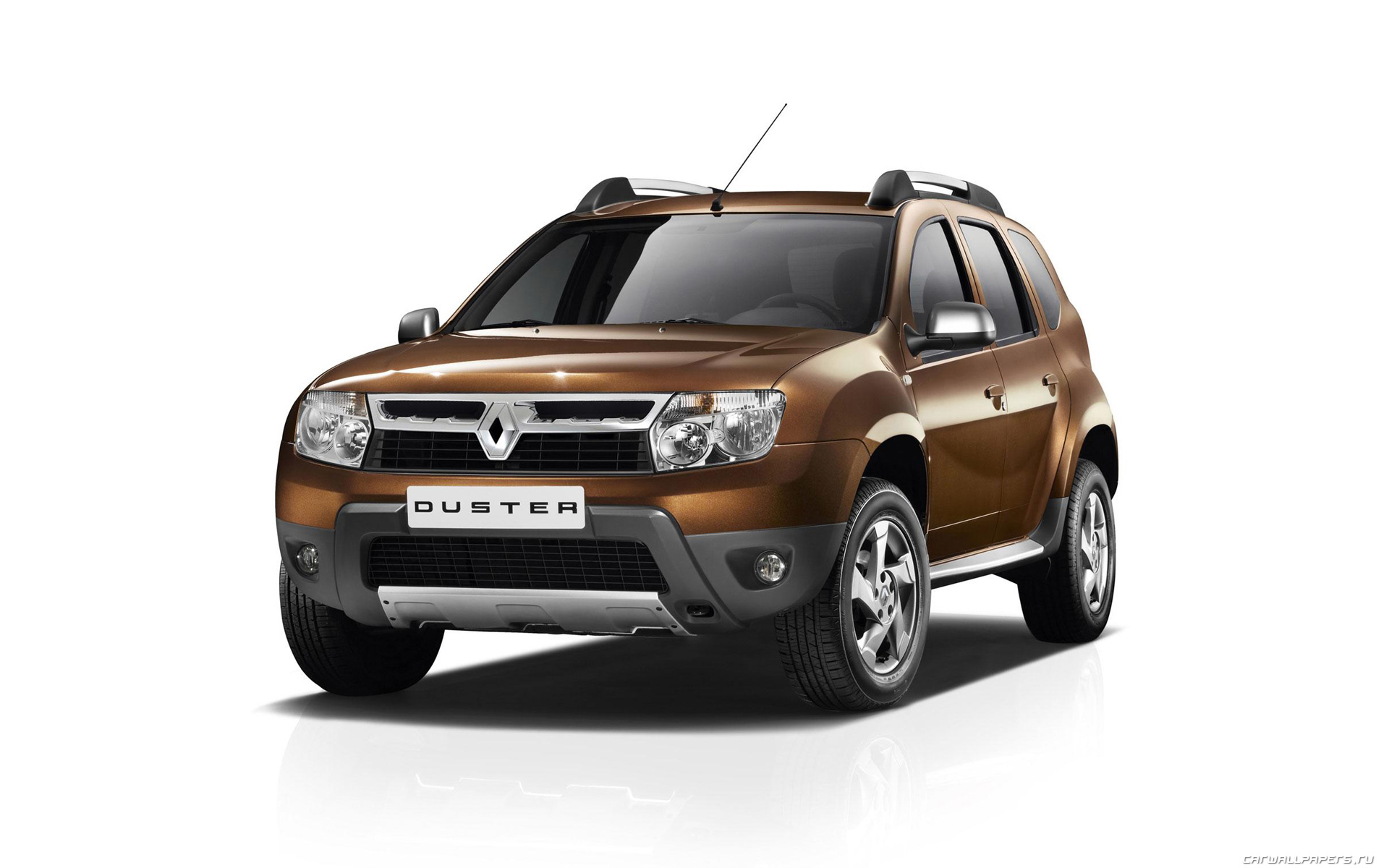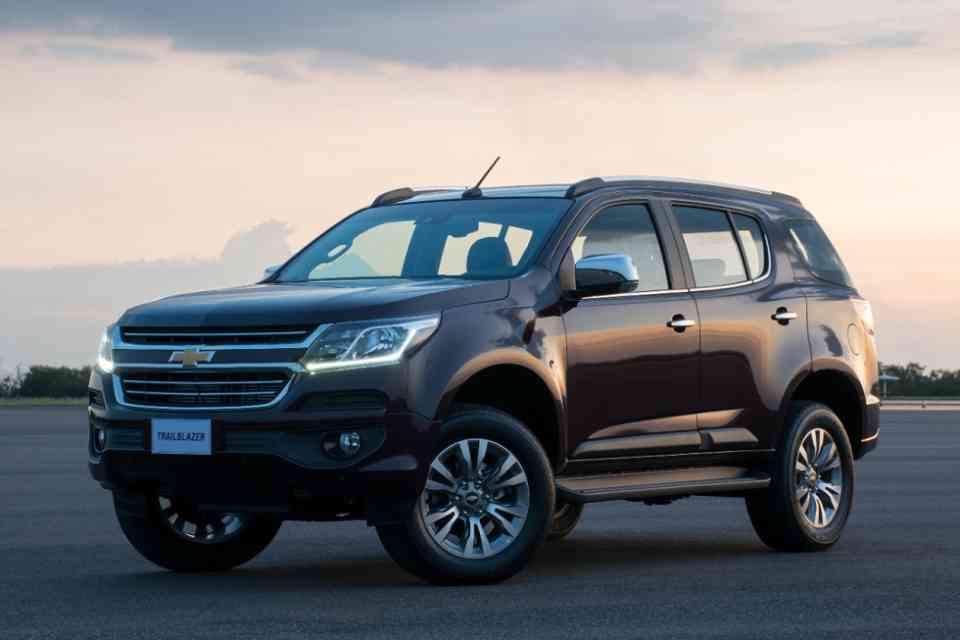Toyota Kenya has received close to 60 orders for its recently-unveiled Toyota Rush model and over 200 inquiries from buyers; outstripping initial sales forecasts less than 2 months since the new model was launched into the local market.
Motor review
The way people buy cars has changed over the last few years. The change, has been aided largely by technology which has revolutionized how people buy cars. Back then, people would spend huge amounts of time trawling through different car dealerships for a sale. Now it is even possible to import vehicles and have them delivered to your doorstep saving you the hustle, and gives you the assurance and peace of mind during the importation process. To help us understand the latest car buying trend in Kenya and across the continent, EABTs Tullah Stephen, sat down with Michael Mureithi, the CEO of Kenyan online car classifieds Cheki.co.ke

Micheal Muriethi, CEO Cheki, Kenya
Michael, how would you describe the auto dealership in Kenya currently?
So far so good. We are seeing the industry recover from last year’s fall when the country was going through an economic slowdown. This year, the industry projects that sales will go up slightly by two percent compared to last year.
Let talks about online vehicle sales. Cheki is among the pioneers in this industry how has it been for you as business?
We have retained our market leading position despite the market recording an increase in the number of online car classifieds setting shop. Our listings continue to grow, we connect over 20,000 buyers and sellers every month. We have done this through continued innovation of our services in the aggressive business world. For us every advantage counts.
What percentage of consumers want the ability to purchase their vehicle online and how do you know?
I can say many Kenyans want to purchase their car online for the convenience it avails them. They have more variety and customisation to their needs. We have seen this especially from our platform as the numbers grow.
What are Kenyans looking for in a car from your opinion?
From our understanding, Kenyans want two things: high quality cars at a great price. If you are able to unlock that, then you have won their hearts and wallets too.
How many vehicles has Cheki imported for customers so far since introducing this service?
This is confidential…(chuckles)… However, we are happy with the results thus far
Let’s switch and talk about dealers for a moment. What do you look for in a dealership to ensure that offering online checkout is a good direction for them?
For us, we ensure the dealer must have the following: A wide variety of cars that are reasonably priced, good quality and a good reputation. We check for the details of the directors to especially verify on their reputation.
How are dealers handling the trade-in and financing aspects of the sale when conducted online? What is the customer experience like?
With regards to trade-ins, the car has to physically be evaluated by the dealer – an online quotation can be provided but this has to be reconfirmed based on the physical valuation of the car’s condition. The customer experience thus in Kenya needs to get better, better technology needs to be incorporated in the process to help with this. At cheki.co.ke we are working on this.
From your experience, what are some of obstacles and challenges dealers experience when offering customers, the option to conduct their purchase online?
I believe its giving the customer a wider variety of cars – not all of us like a white, black or grey Toyota fielders, some of us want a gold one. The other challenge is better financing options to purchase a car.
Most Buyers don’t have a clue of how to buy a car in the internet age. What are some of the top of mind tips you can give to people looking to buy cars online?
Couple of things to note as buyer: identify why you want a car? Is it for business, personal commute, status symbol, to drop of the kids to school? This will help you select the right car for your needs. Secondly, research on variety in the market perhaps on cheki.co.ke. Third, compare the quality of the car, that is, the make, model, year of manufacture, mileage, condition of the car and their respective prices. Once you’ve selected the car, have the car inspected and serviced and finally ensure that you pay only to a trusted seller.
You have mentioned the word trust more often in this interview. Why?
It is a fact that in this business or any other online business, consumers rate trust more than the cost.
Recently, Cheki introduced new service, ChekiPort that allows consumers to import vehicles. Why and how did the idea to offer customers the chance to import cars online came about?
Car buyers are increasingly importing directly from overseas dealers over the past couple of years. This was driven by the need to get better prices in addition to having cars customized to their needs. However, importing a car is quite challenging for example, selecting the right car, selecting a trustworthy dealer, negotiating for the right price and sending money to a foreign bank account. ChekiPort comes in to create a trusted seamless end to end car importation process for car buyers.
So how does ChekiPort work?
First, consumers identify the car of their choice by visiting Cheki and clicking on the ChekiPort Imports banner. If you wish to finance the car over a certain period of time, you have the option of getting a Car Loan through Cheki. Cash buyers will, however, need to make the full payment. ChekiPort will then proceed to purchase the desired car for you. It will then undergo the mandatory quality inspection as required by Kenya Bureau of Standards. Once the car has undergone all the necessary checks, it will be loaded on a ship and will take on average of six to eight weeks to arrive in Mombasa. Once the car is in the country, ChekiPort will proceed to clear the vehicle on consumers’ behalf.
Most car buyers prefer to get value from test-driving. How does the car importation business enable this experience? Is this a possible challenge?
As car buyers, we test drive cars because we want to be sure of the quality of the cars we are buying. ChekiPort focuses only on high quality cars at a great price, this is the trust we have built in the market. Think of it like this…when you buy a loaf of bread from a supermarket you don’t taste it first before you purchase it, you trust the retailer to sell you high quality bread.
Do you think that ride-sharing services have had any impact on the way people think about cars, car ownership and transportation in general? What’s your view?
Yes, it has. Millennials are starting to question the need to have a personal car and are starting to opt to buy cars for business such as ride-sharing or car hire. Generation Xs and Ys still believe owning a car as a means to define their personal/career success thus are still buying cars at a high rate.
What is one on-point message you’d like the industry to know around the idea of consumers conducting their vehicle purchase online?
It is simple, better variety of cars at a great price and from trusted sellers.
Looking at the next three to five years, what do you see the greatest challenges being? What about the opportunities?
Greatest opportunities lies in the spare parts or mechanics integration. Other opportunities could also be in car financing, car leasing or rentals. The greatest challenge I think will be in having the right capacity or resources to do this.
The significance of manufacturing to any economy in the world cannot be understated. Many economic development success stories owe a great deal to the role of the manufacturing sector. However, the story has been less than impressive in Kenya over the last few decades.
Growth trends have shown that the country’s manufacturing sector has remained stunted and it’s immense potential underutilized. This has undermined its intended impact on the economy.
According to the Kenya Association of Manufacturers (KAM), the performance of the manufacturing sector has been weak and has failed to keep up with developments in the region and globally. Its share of the GDP was the same in 2015 as it was in 1965, declining since 2010 to a low of 9.2 per cent by 2016. Kenya’s GDP stands at more than US$70 billion. The manufacturing sector therefore contributes an average of up to US$7 billion of the total GDP, an amount that cannot be overlooked.
In its efforts to revitalize the manufacturing agenda, the KAM in 2017 launched a ten-point policy agenda for industrialization. The policy offers guidance to the government on achieving economic goals stated in its manifesto by directing its efforts on the manufacturing sector.
A segment of manufacturing in Kenya that has not received deserved attention is the locally assembled motor vehicle sector. The sector plays a significant role in building the country’s economy, essentially through the transportation of goods and people, and the formulation of intricate value chains that create employment and business opportunities for thousands of Kenyans.
Also, read General Motors Rolls Out the New Chevrolet Trailblazer 2017
However, compared to other countries, vehicle assembly in Kenya still has a long way to go, to compete at global levels. Drawing comparisons with other nations that have heavily invested in local vehicle assembly, the growth opportunities are immense and the return on investments is unquestionable.
Role of Policy in driving Inclusive Growth
It is encouraging to see that the Kenyan government has prioritized the growth of manufacturing in the country through the Big Four agenda. Local motor vehicle assembly can strengthen Kenya’s manufacturing potential and help achieve tremendous growth through favorable industry regulations and policies.
Examples from other markets where the motor industry has achieved great strides continue to demonstrate that government support is a critical component of their success. New investment laws set by governments have favourably influenced the rise of the automotive industry in some countries. For instance, foreign car companies setting up shop in Morocco today benefit from a variety of incentives, including a five-year corporate tax holiday, VAT exemptions, and land purchase subsidies.
In measures to attract more investors into the motor vehicle sector, the Kenya government in early 2017 announced a reduced corporate tax rate of 15% down from 30% for the first five years of operation, for new vehicle assemblers. However, it was not made clear how this measure would apply to existing assemblers, who have already made significant investments in the business.
Currently, as per the Kenya National Bureau of Standards (KNBS), used cars make up about 80 per cent of vehicles imported in Kenya on an annual basis. With such high numbers of second-hand cars, the market for locally assembled vehicles is undermined, constraining its growth.
Ironically, we currently boast of three automotive plants in Kenya capable of assembling 30,000 units per year (on a single shift) but they’re operating at just about 33 per cent of their capacity. A policy to discourage the importation of second-hand vehicles will achieve beneficial impact on local assembly. Its gratifying to note that Kenya’s recently formulated automotive policy framework proposes to impose further age limits on second-hand vehicle imports, from eight to five years.
Local motor vehicle assembly can strengthen Kenya’s manufacturing potential and help achieve tremendous growth through favorable industry regulations and policies.
Rita Kavashe
To demonstrate the effectiveness of this bold policy move, in 2013, Nigeria passed a new tax regulation for second hand cars to discourage vehicle importation and encourage local production. The Nigerian Government introduced steep tariff rates of up to 70 per cent on imported Fully Built Units (FBU), 10 per cent on Semi-Knocked-Down Units (SKD) and 0 per cent on Completely-Knocked-Down Units (CKD).
After this bold move, PWC released a survey titled ‘Africa’s Next Automotive Hub’ that predicted by 2020, Nigeria’s impressive GDP will be the 16th largest economy in Africa and the 9th largest economy by 2050 characterised by a large consumer base with ever increasing purchasing power driving the demand for locally assembled automobiles.
Answering the Unemployment Problem
Local vehicle assembly capacity to provide opportunities for skilled and unskilled labor in the country is immense. At full capacity, a local vehicle assembly chain requires a larger number of employees, hired directly, to fully assemble the vehicles compared to the number of manpower required to import second-hand vehicles.
The indirect employment opportunities are also extended through the value chain both downstream and upstream e.g. local vehicle components suppliers and vehicle dealers. Indirect employment includes personnel working in enabling industries, such as vehicle finance and insurance, vehicle repair, vehicle service stations, vehicle maintenance, vehicle and component dealers, drivers, cleaners, which totals to about 60 to 70 per cent.
In Thailand, according to a survey of members of the Auto Parts Club and TAPMA, the industry employs more than 500,000 people. In Egypt it creates 86,000 direct and indirect jobs. In Malaysia, the automotive workforce is also anticipated to increase, with more than 29,000 new jobs expected to be created in 2018 employing more than 755,000 people.
Foreign Direct Investment
Foreign Direct Investment (FDI) is widely believed to be a catalyst that promotes economic development. As many countries compete to attract FDI, it becomes important for the policy makers in the country to understand the effect of FDI on productivity. A robust local vehicle assembly automatically attracts numerous Foreign Direct Investment in the direct or indirect support of the industry.
Through the sixth TICAD conference which took place in 2016 in Nairobi, Japan has looked at mobilizing support for Africa’s socio-economic development underscoring the spirit of “African ownership” and “international partnership”. Numerous benefits come along with FDI: Job creation, technology transfer to support industrialization, skills training for local youth, manufacture of products suited for the region as well as support for research and innovations.
The local vehicle assembly industry is capital intensive and requires long-term planning on regulatory issues. Thus, a favorable policy regime is critical to drive growth. This industry represents one of the biggest business opportunities over the coming decade that will provide employment opportunities, reduce the wage gap and consequently grow our GDP.
This growth is fundamental to the advancement and expansion of manufacturing in Kenya. Projections are that the auto industry’s flourishing period will take longer than expected. Nonetheless, it’s time the Government awakens the sleeping giant that is motor vehicle assembly sector in Kenya.
Rita Kavashe is the Chairperson, Kenya Vehicle Manufacturers Association (KVMA)
Equipment manufacturer, Caterpillar Mantrac has Monday launched a new version of its F2 Series Backhoe Loader in a bid to target the smaller operators with a range of features purpose-built for the African and Middle Eastern markets.
The new Cat 426F2 Backhoe Loader with Side Shift frame comes with a massive range of options so customers can build a machine to suit their business needs and budget.
With the 426F2 customers can now choose between 2- or 4-wheel drive, specify a backhoe loader or excavator control pattern, decide on the right climate control or heating package for the cab and consider the level of Product Link™ technology that will suit them.
“With this cutting-edge technology and the productivity of the 426F2 we project our market share to grow in this category of equipment,” said Corné Timmermans, Caterpillar Managing Director for Africa and Middle Eastern markets.
The launch displays Mantrac group’s readiness to continuously invest in the Kenya business to better support customers who have been with them over the years with innovative a diverse offering to suit industry trends.
John Waikwa, Machines and MH Sales Manager Mantrac Kenya Limited, highlighted that with the power and technology to take both fast trenching and delicate digging in its stride, the machine has all the performance, manoeuvrability and reliability customers can expect from the Caterpillar brand.
Kenya has a vibrant construction industry, thus contractors are seeking solutions that will enable delivery of their projects in a timely manner and at lower costs hence the decision to launch the product in the country.
Caterpillar Inc. has a long history in Africa, with the first dealerships on the continent starting in the mid-twenties of the 20th century. Here in Kenya, roots go back to that period of time with Gailey & Roberts, which was acquired by Mantrac in 1997. Today, Caterpillar is present in all countries of Africa through dealers except for Somalia.
Mantrac Kenya Limited is also part of the giant Mantrac Group which holds the Caterpillar dealerships in Egypt, Nigeria, Sierra Leone, Liberia, Ghana, Tanzania, Uganda, Iraq and in the Western Siberia region of Russia. Being part of an international network gives a competitive edge in product delivery and service support.
Features
- Powered by the 68.5 kW Cat 3054C 4-cylinder diesel engine matched to a Cat four-speed Power-Shuttle transmission.
- Standard 2-wheel and optional 4-wheel drive models both come with a 100% differential lock in the rear axle for maximum traction in poor ground conditions.
- New wide cab design for excellent visibility and comfort gives the operator extra room to switch positions for loading, carrying and trenching tasks.
- Whether it’s close-up truck loading or digging over obstacles, the new 426F2’s distinctive excavator-style boom outperforms straight boom designs.
- High-rotation bucket linkage ensures superior material retention and exceptional removal from the trench.
- Hydraulic system moderates fuel usage, reduces operating noise levels and decreases wear and tear on key components.
- Standard-fit Cat Product Link™ maximizes machine uptime through remote data monitoring by VisionLink. Customers can specify the type of data gathered.
Not all doom and gloom for the motor industry as new entrants expected to help reverse downward drift on vehicle sales.
By Brian Yatich
Kenya’s motor business has been growing robustly in the last few years, hugely supported by the expanding urban middle class and access to flexible financing options for buyers.
However, latest industry reports indicate that the number of new vehicles sold in the first two months of this year fell by more than a third.
Fresh data from the Kenya Motor Industry Association indicates that the country’s industry sales volume dropped by 35 per cent to 808 units from 1,243 units in June last year.
Market leader General Motors (GMEA) February 2017 sales closed at 261 units compared to 403 units sold in a similar period in 2016, a 35.23 per cent.
This comes in the wake of American giant General Motors announcement to exit the East African market next month, with the sale of its entire 57.7 per cent stake in General Motors East Africa to Isuzu Motors of Japan.
The exit of GM marks an end to its operations in the region spanning more than four decades.
Toyota sales in the two months dropped by 9.5 per cent year-on-year to 362 units compared to 399 units sold in February last year, despite light trucks remaining the most bought vehicles in the market.
Simba Colt sold 258 units down from 481 units by February 2016, a 46.4 per cent drop. CMC sold 121 units down from 231 sold in a similar period in last year.
DT Dobie sold 71 units down from 111 units, Tata 99 from 107 units while Crown sold 76 units, a 32 per cent drop from last years’ 112 units. Other models accounted for 69 units a drop from last February’s 177.
The market has further continued to feel the heat from last year’s capping of the interest rates for people who rely on asset financing facilities by banks which has pressed access to credit in the private sector, as financial institutions have focused on alternative investments.
New Entrants
In the wake of these gloomy results, automotive manufacturers like Daimler, Volkswagen, Volvo and Iveco have announced plans to set up locally as they target commercial vehicle market in the region with its various models.
German based auto firm, Daimler has entered the Kenyan market in cooperation with local sales partner DT Dobie Kenya with introduction of Buses as it seeks to rival Isuzu and Scania brands to meet the growing population’s demand for public transportation which is currently on a deficit of 2,500 new buses yearly.
DT Dobie managing director, Ian Middleton, said the vehicle manufacturer has already assembled 10 Mercedes-Benz bus models with a target of up to 150 units by year end – which will represent 10 per cent market share of the vehicle segment.
In May this year, Volvo Trucks partnered with NECST Motors to increase the Volvo brand’s footprint in East Africa through an investment into 20 new workshops across the region and is expected to raise Volvo’s regional market share, largely dominated by Isuzu and Toyota’s Hino brands.
The automaker will see its first locally assembled truck hit Kenyan roads as early as the first quarter of 2018.
Another entrant is Volkswagen (VW), who will resume production across the East African after 40 years. VW is the second-biggest auto maker by sales in South Africa after Toyota with its vehicles sold domestically as well as exported to the rest of Africa.
The German carmaker which assembled cars in Kenya in the 1960s and 1970s, will establish an assembly plant to produce its Vivo model, President Uhuru Kenyatta and Thomas Schafer, Volkswagen South Africa’s chief executive, said.
“Volkswagen South Africa will now again establish an assembly plant to produce motor vehicles at the Kenya Motor Vehicle Manufacturers limited in Thika,” Kenyatta said on after meeting Volkswagen South Africa executives.
With the drop in sales, Volkswagen said it saw opportunity in the market with the first car expected to be rolled out before the end of this year.
“We believe that Kenya has the potential to develop a very big fully-fledged automotive industry. The East African Community has got the potential, and today is the first step in this direction that we want to take with our passenger cars,” Thomas Schafer said.
Earlier this month France’s Peugeot announced plans to restart production in Kenya, having halted manufacturing operations there 15 years ago.
The firm is focusing on assembling its Polo Vivo family saloon the “508” and “3008” models. In the first phase, the plant will produce a capacity of up to 1000 vehicles – a figure expected to increase to 5000 in the near future.
Counterfeit
The Kenya’s car market has been further dented by low-priced second-hand imports from countries such as Japan and China, dominating the market.
Currently, the country with a population of 44 million has a total vehicle fleet of over 1.3 million, putting the ownership rate at around 28 to 29 vehicles per 1000 people.
Used cars are significantly cheaper than new cars. This has created and sustained demand for used cars. Spurred by an entrepreneurial spirit, an increasing number of car dealers are cashing in on this demand. As experienced in the capital city and other major urban centres across the country.
According to a 2016 report by Deloitte the vast majority of those vehicles – roughly four-fifths – are second-hand and frequently driven on ageing or unpaved roads.
The study recommended that there is plenty of room for growth in local vehicle sales.
The competition is intensifying and dealers have employed different strategies to sharpen their competitive advantage.
Unfortunately, amid the race to capture the market, unscrupulous dealers and brokers have crept into the market with many Kenyans falling victim to these scammers who sell to them fake and non-standard car products.
The automotive industry is however expected to grow in 2017 up to 2018, despite the challenging economic and political climate.
India’s vehicle manufacturer, Mahindra & Mahindra Ltd on Wednesday launched the Big Bolero Pickup in the Kenyan market as it seeks to raise the benchmark in the pick-up category.
The Auto Maker has already made sales of over 500 units in the segment, with 17 units of the Big Bolero pickup being sold off.
This particular model is designed to cater to the needs of businessmen and traders with its large cargo box, a payload capacity of 1.5 tons with a spacious cabin.
“The Bolero range of pick-ups have been popular in Kenya, owing to their unmatched fuel efficiency and lower operational cost. At Mahindra, we took cognizance of the evolving needs of our customers specific to Kenya and have effectively addressed the need gap in terms of comfortable cabin and superior performance.” Ashok Thakur, Head of International Operations, Africa, Mahindra & Mahindra Ltd. said.
Features
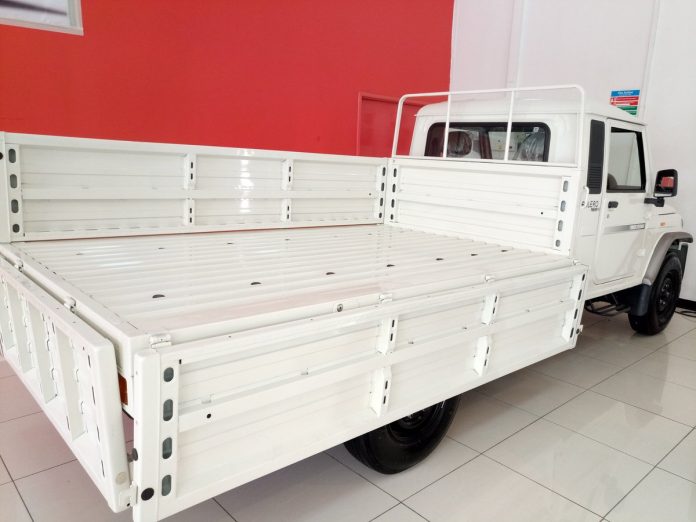
Highest payload capacity in the category of 1,500 Kgs – The Big Bolero Pickup will be available with 1,500 kg payload.
Biggest cargo body in the category – Big Bolero Pickup comes with a cargo body measuring 9 feet (2765 mm) which will allow customers to load bigger items.
Superior Performance – The Big Bolero Pickup is powered by the proven MDI Turbo-charged engine that delivers 63 HP (46.3 KW) of Power and 195 Nm of Torque.
Better ergonomics and driving comfort – It provides superior comfort through its spacious ergonomically designed big cabin, sliding and reclining seats and power steering as a standard feature across all variants.
New looks and interiors – The Big Bolero Pickup comes with new exteriors and premium interiors and incorporates a new instrument panel and color theme.
With 2 years/50000 kilometers warranty on engine and drive-line, the Big Bolero Pickup is going for 19,000 USD (Ksh 1.95 Million) inclusive of VAT and will be available at their local distributor, Xylon Motors.
With Surging sales, Renault seeks to offer a competitive deal on mid-sized SUV vehicles in the regional market.
By Brian Yatich ![]()
The ever expanding motor industry in east Africa looks promising for car manufacturers, the open car market has lured car corporations such as Renault, Toyota, Suzuki and many others for a stake in the region as they ramp up their portfolios to capitalise on this prospective sector.
However recent data by Kenya Motor Industry indicates that the automotive sector experienced a deep slump in 2016 has seen sales drop by 31 per cent as of October 2016. This according to analysts is due to the high imports over 7,000 units of second-hand vehicles with a greater percentage of imports coming from Japan.
In a bid to gain an edge on this, Renault, the International manufacturer of Vehicles decided to cut the price of its SUV KWID which was launched late last year to KS. 1 million which was previously priced at KS. 1.2 million.
Furthermore, the French Automaker has decided to introduce two more SUV Vehicles to their collection a move which seeks to seize the market share.
It’s regional manufacturer, Renault Kenya has so far invested over 1.7 M USD in the motor business offering unrivalled models at affordable prices in the market with over 116 units have been sold since 2014.
According to Renault’s Brand Manager, Jonathan Dos Santos the two brands enters the market at a very interesting time when Kenyans want value for their money and are looking for models that meet their immediate motoring needs.
The two models introduced to the market this year is Renault Kadjar and Duster, the two come a year after their successful launch of Renault KWID and Renault Kangoo (Van).
These models join the mid-sized SUV category which is currently hotly contested local segment for luxury cars targeting the middle-class households as it competes directly with Honda CR-V, Toyota RAV 4 and Hyundai Tuscon which sits under the SUV Crossover, but perhaps with its striking look and appealing interior features and muscle look it could set itself at par.
Kadjar
A look at the specification; the Kadjar sits right above the Duster SUV in Renault’s line-up, as it measures 4.45 metres long, 1.84 metres wide and 1.6 metres tall. According to the automaker, the Kadjar is an integration of the SUV, hatch and Sports Wagon.
The model is available in two engine options a fuel consumption of 5.7 litres /100km and the 5.4 litres/100km engine. Both have a six-speed manual transmission engines connected to it.
It also features a special self-parking system with rear camera and 360° Park Distance Control system with 12 ultrasound sensors to estimate the space available to park. When reverse gear is engaged, the driver only needs to control the speed while the system takes control of the route.
It has an off-road ability thanks to its 190mm ground clearance which will operate quite well with the poor standard of roads in the region.
On the technology front, the car has a customizable homepage on its multimedia system where the driver can configure icons and widgets as they move/activate them with their fingers.
The Model also boasts of LED daytime running lights, dual zone climate control, electronic parking brake, keyless entry and voice activated controls. It also features “fog lights” which provides better visibility when turning, illuminating on the side to which steering is turned.
The boot cabin is spacious enough for luggage and extra people as it has split-folding rear seats.
Duster
The New Duster model has a new face lift, an advancement from their previous Duster Model which is now available in 4×4 and in 4×2 manual control running on diesel engine, however, the automatic one is not yet available, but the automaker has hinted its availability later this year.
It has an upgraded exterior and interior design with enhancements perfectly complement the car, it retains its iconic crossover-style body shape,
“This is one of our best models and has a great history in global markets.” Says Jonathan.
In line with the advancements in technology, the new Duster hasn’t been left behind, it is equipped with a new rearview camera with guidelines, new automatic air conditioning and a new window with anti-pinch. It features a 7” touchscreen infotainment system, dash layout and ventilation controls.
For the safety of its users, the New Duster has a host of active and passive safety features including ABS, EBD with Brake Assist, Dual Airbags, ESP & Hill start assist.
It is also equipped with front driver and passenger airbags as well as a visual and sound signal to alert you just in case you forget to fasten the seat belt.
The Duster’s dashboard is dense with a soft-touch which is nicely textured, with switches and buttons that are well checked giving it a smooth feel.
The two new models come at a competitive price for cars in its category with outstanding features that will offer the best driving experience for discerning drivers in Kenya and the region.
The Kadjar retails at KSH 4.8 Million while the Duster goes for roughly KSH 3.2 million which are sold at the manufacturer has branches in Nairobi, Mombasa, Kisumu and Kisii and is looking to expand further in the future.
Simba Caetano Formula is the Renault official distributor in Kenya; A joint corporation between Simba Corporation and Salvador Caetano Group.
Competition for Kenya’s Public Service Vehicle Segment (PSV) is set to heat up as Toyota Kenya introduces a new 16 seater Luxury shuttle under its Toyota Hiace Brand.
The vehicle which has been specifically designed for the Long Distance segment of the matatu industry will come in two options namely a 14 seater and 16 seater shuttle.
The Hiace ‘New Shark’ is about half a meter longer than the Toyota Hiace which is imported into the country as a used vehicle and is the current vehicle of choice for long distance matatu operators.
The vehicle comes equipped with the latest fuel efficiency and fleet management systems enabling vehicle owners to not only save on fuel but also monitor the vehicle’s fuel consumption.
Toyota Kenya Deputy Managing Director Arvinder Reel said that the new vehicle will not only increase the profits of operators but also offer a more convenient and luxurious mode of travel for long distance travelers.
“Most long distance travelers prefer shuttles because they have a shorter waiting time and are faster compared to buses that often have longer travel times and take longer to fill up at bus stations. Despite this preference, most matatu owners have to increase travel frequencies to break even especially during low travel seasons escalating costs as they need more drivers.” Reel said
The Hiace New Shark will increase passenger capacity by adding three additional seats.
Through its Hino Kenya Heavy Commercial Division, Kenya Toyota has been looking to expand its market share in the PSV segment through the introduction of locally assembled buses and Lorries at its Mombasa based Complete Knock-Down Unit.
“Though the Hiace New Shark Model is currently imported from other markets, the seat fittings and interior is done locally, in the long run we intend to locally assemble the Hiace New Shark Model. When this happens we will create more job opportunities locally both directly under Toyota Kenya and through vehicle accessory suppliers’ Reel said.
The Hiace New shark will be priced very competitively and will also have hire purchase and other financing options with Toyota Kenya having already partnered with local banks and Matatu Saccos to offer alternative financing models for the vehicle.
“One of the most interesting trends on the Kenyan market is that vehicle buyers (both commercial and individual) tend to consider the resale value of the vehicle as one of the top considerations in determining their purchase. The New Shark is competitively priced and will offer a higher resale value for investors, when local assembly begins we hope to make the price even more competitive enabling operators to own a younger more efficient fleet of vehicles.” Reel added.
By Brian Yatich
Local Motor dealer, CMC Motors has renewed its market focus on the large passenger bus segment, with the delivery of the German Engineered (MAN) model buses.
The firm’s strategic focus on the large passenger buses with a capacity to carry 67 passengers, will see CMC Motors raising its sales, marketing and service ante for the locally assembled MAN buses.
Ahead of the festive season, CMC Motors has managed to close a deal to deliver 20 MAN Bus units to West Kenya based overland transport firm Climax Transport Ltd.
The operator of the popular ‘Climax’ christened buses operates from Nairobi to Kisumu, Eldoret, Kitale, Webuye and Busia among other destinations.
The entry of the MAN models with superior German engineering in the large bus market segment has been hailed as a game changer for CMC Motors.
Speaking when he confirmed the firm’s strategic focus, CMC Motors Managing Director, Wanjohi Kangangi said the MAN model introduced into the local market has been tropicalized to meet the demanding local conditions for passenger buses.
He added that CMC Motors will also be providing comprehensive after sales service for MAN Bus customers.
He expressed delight that an initial test project with Climax Transport Company earlier on in the year had inspired an order of 20 MAN buses. Overall, the order book for the MAN buses, he disclosed is fast growing as local operators continue to appreciate the quality of engineering and seamless bodybuilding advantages provided by Thika based Kenya Vehicle Manufacturers (KVM) for CMC Motors customers.
CMC Motors Divisional Manager for Commercial Vehicles, David Wamathu, said that they have been working on a collaborative tropicalization programme with MAN counterparts in Germany geared at delivering a comfortable, passenger safety and fuel economy superior bus engine and chassis for the local market.
“We are delighted to have an ambassador of Climax’s calibre confirm that the Germans did what they are best known for – outstanding technical solutions. We were then able to localize and do the assembly and bodybuilding right here at (KVM) plant in Thika.” he added
The new MAN HB3 buses set on a rugged and reliable chassis, are powered by a 287kW (390hp) Euro3 common-rail MAN D20 diesel engine with TipMatic automated manual trans-mission system, and also features a ZF intarder, EBS braking system with a full air suspension for added passenger comfort.
